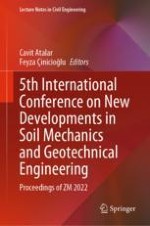This volume highlights the latest advances and innovations in the field of soil mechanics and geotechnical engineering, as presented by leading international researchers and engineers at the 5th International Conference on New Developments in Soil Mechanics and Geotechnical Engineering (ZM), held in Nicosia, Northern Cyprus on June 30-July 2, 2022. It covers a diverse range of topics such as soil properties and characterization; shallow and deep foundations; soil improvement; excavations, support systems, earth-retaining structures and underground systems; earthquake geotechnical engineering; stability of slopes and landslides; fills and embankments; environmental preservation, water and energy; modelling and analyses in geotechnical engineering. The contributions, which were selected by means of a rigorous international peer-review process, present a wealth of exciting ideas that will open novel research directions and foster multidisciplinary collaboration among different specialists.
